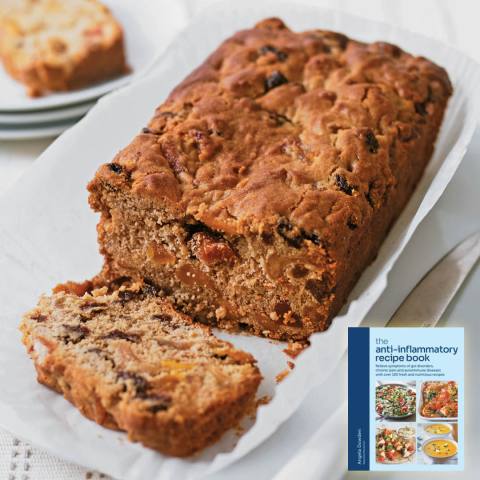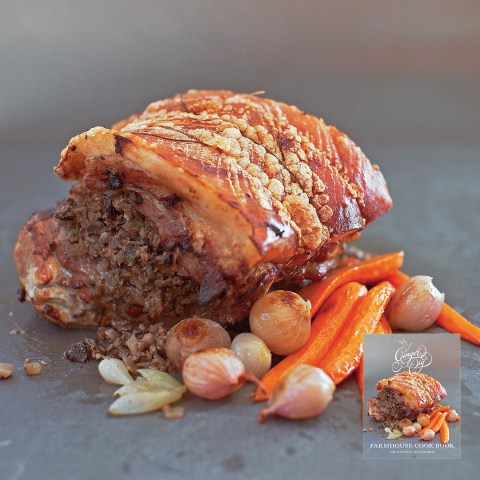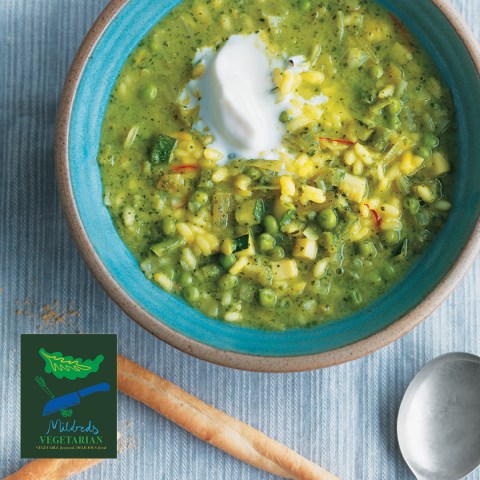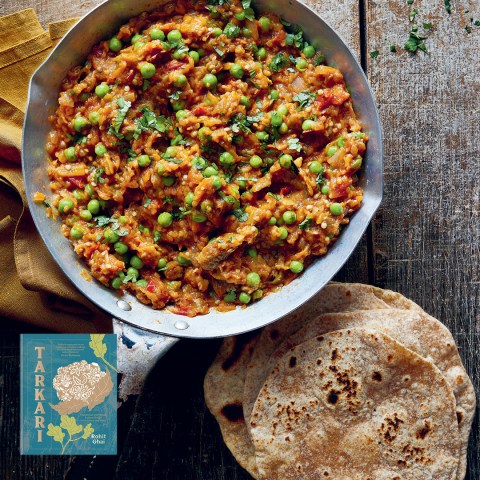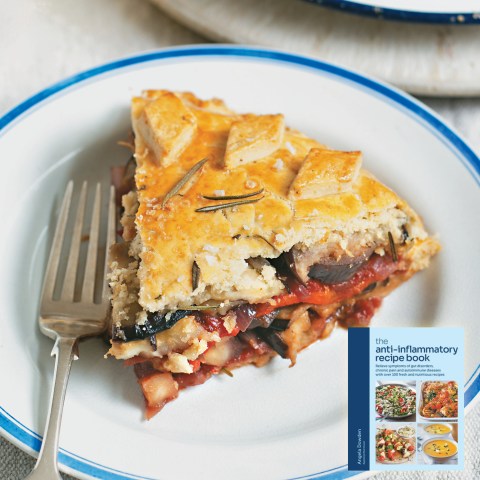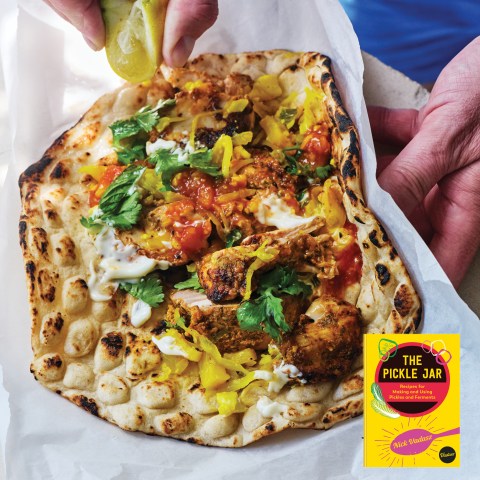Beef Wellington from Cooking and the Crown
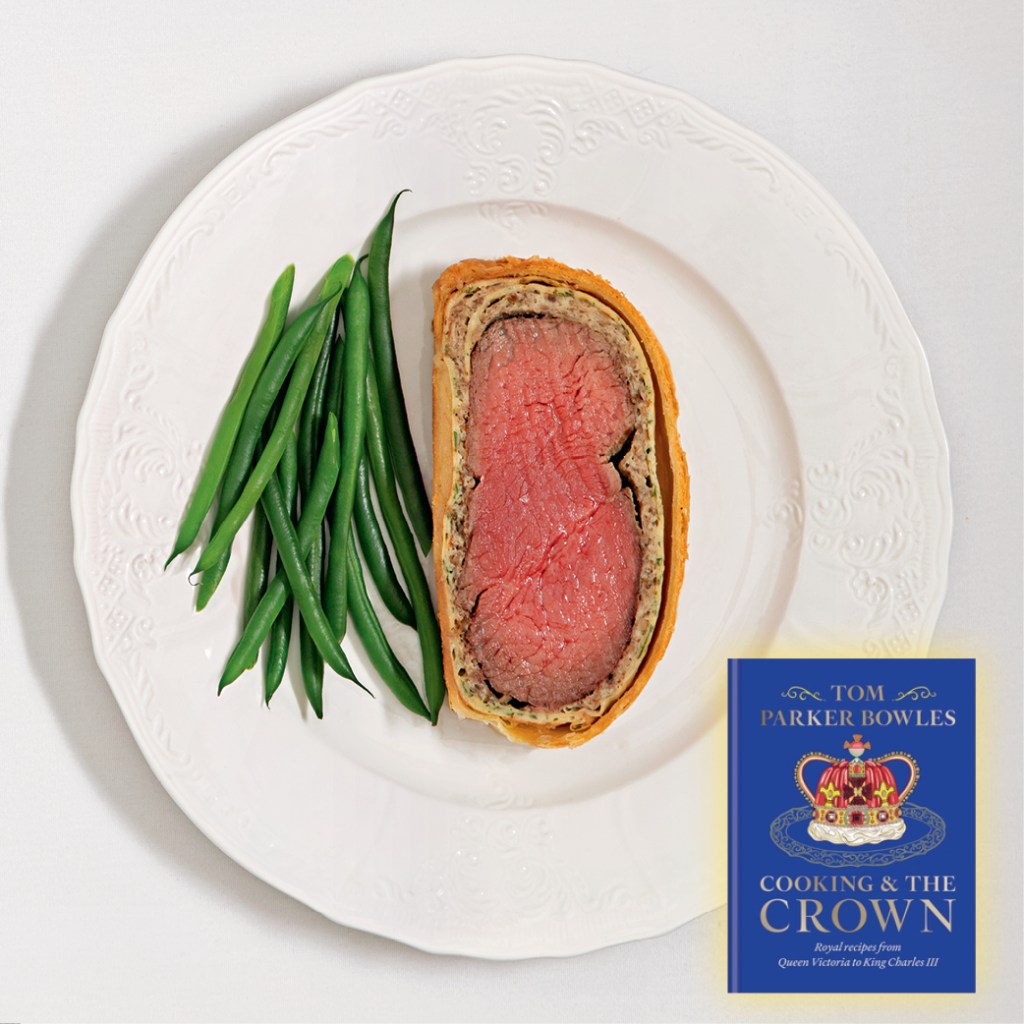
“The Duke of Wellington, conqueror of Napoleon and inspiration for the rubber boot, was one of Queen Victoria’s favourites, ‘our immortal hero,’ in her words, both mentor and confidante. An enthusiastic gossip, as he grew older and steadily more deaf, he tended to shout rather than whisper tales of various indiscretions, meaning the entire table (usually including the subject of his scurrilous chat) could hear every word. A sharp look from the Queen, though, was all that was needed to shut him up. Famously uninterested in food, one story goes that Beef Wellington was the only dish he would eat. Another claims it was simply a patriotic rebranding, during the Napoleonic Wars, of the French Filet de Bouef en Croûte. Whatever the truth, it’s a classic of the royal table. This recipe comes from Jamie Shears, Executive Chef of the Mount St. Restaurant. It opened in 2022 and two of the first guests were the King and Queen. You could also substitute a fillet of venison for the beef.” Tom Parker-Bowles, author of Cooking and the Crown

Serves 4
750g good-quality, centre-cut, dry-aged beef fillet, trimmed of excess fat and sinew
1–2 tablespoons olive oil
60g unsalted butter
1–2 tablespoons English mustard
2 banana shallots
250g chestnut mushrooms, trimmed
Leaves from 2 sprigs of thyme
1 skinless, boneless chicken breast
100ml double cream
3 eggs
60ml full-fat milk
60g plain flour, plus extra for dusting
2 tablespoons finely chopped parsley
500g puff pastry
Salt and freshly ground black pepper
Season the beef generously with salt and pepper. Heat 1 tablespoon of the oil and 25g of the butter in a large frying pan over a high heat. When the butter is foaming and the pan is hot, add the beef and sear on all sides to a deep golden-brown colour. Remove from the pan and leave to cool. Do not wash the pan as you need it again. Leave the beef to cool and then brush with the English mustard to coat.
Finely dice the shallots and tip into the frying pan with another 25g of the butter and sweat over a low heat for about 5 minutes until soft.
Roughly chop the mushrooms, then tip into a food processor and pulse until finely chopped. Add the mushrooms and thyme leaves to the frying pan, season, increase the heat to medium and cook for about 10 minutes, stirring often until all the moisture has evaporated. Tip the mixture into a bowl and leave to cool.
Dice the chicken breast, then blitz in a food processor until smooth. Add the double cream, season and mix again to combine. Add this paste to the cold mushrooms, mix until smooth, then cover and chill until ready to use.
Make a crêpe batter by whisking two of the eggs with the milk and flour until smooth. Add the chopped parsley and season. Beat the remaining egg in a separate small bowl and set aside.
Melt the remaining 10g of butter in a non-stick 20cm frying pan over a medium heat. Pour in a thin layer of the batter to make a pancake and cook for about 1 minute until golden on the underside. Flip the pancake over and cook for a further 30 seconds. Remove from the pan and repeat to make 3–4 pancakes in total. Leave to cool.
Lightly dust the work surface with flour and roll out the puff pastry to a 30 x 40cm rectangle. Arrange the crêpes, slightly overlapping, down the length of the pastry, leaving a 2cm border all around. Spread the pancakes with the mushroom mixture and place the seared mustard-coated beef fillet on top. Brush the edges of the pastry with the beaten egg and fold the sides in, brush with egg again, then roll the pastry around the beef in a tight cylinder. Cover tightly with clingfilm and chill in the fridge for at least 1 hour or up to 4 hours to set.
When ready to cook, preheat the oven to 200°C/400°F/gas mark 6.
Unwrap the Wellington from the clingfilm and place on a lined baking tray. Brush the pastry with beaten egg to glaze and cook for 45–50 minutes until the pastry is crisp and golden brown. After 45 minutes the beef will be medium rare; after 50 minutes it will be medium. Remove from the oven and rest for 20 minutes. Slice your Wellington into four thick slices to serve.

